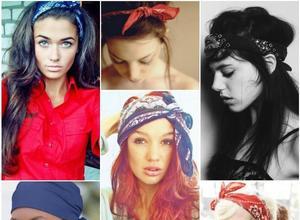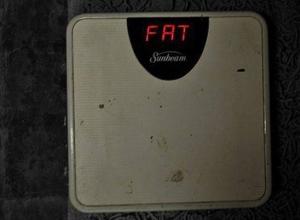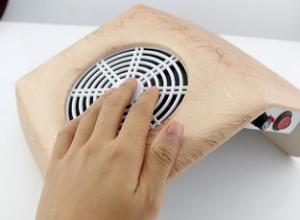Garter stitch with two different methods and on different types of needles. Garter stitch with knitting needles: diagram and description Garter stitch with knitting needles
Simple garter stitch with knitting needles perfectly preserves the original appearance of the knitted item, it does not stretch, and its edges do not curl. The pattern is airy and embossed. Garter stitch can be made from knit stitches alone or from purl stitches alone, as well as by alternating knit and purl rows.
We offer several video tutorials that tell you how to knit garter stitch. They provide the basics for creating this simple pattern, which can be used for a variety of purposes, for example, you can knit a cardigan or bactus in garter stitch, use the pattern as a background for other types of patterns, or knit in the round.
Let's look at how to knit garter stitch with knit stitches. The knitting pattern is extremely simple. Having cast any number of loops for the first row, remove the first loop, and knit all the remaining loops, inserting the knitting needle behind the front wall of the loop. When the row is completed, the last stitch is knitted and the knitting is turned over.
Everything is repeated in exactly the same way: the first loop is removed, and the entire row is knitted with facial loops. The last loop is also knitted. The product obtained in this way looks the same on both the front side and the back.
This knitting method is extremely simple and fast. Using it, you can knit almost anything - under your knitting needles you will get a hat or collar, scarf or snood. If the size of the item is small, knitting can be done with ordinary knitting needles, the number of which is selected depending on the thickness of the yarn used. If the product is planned to be wide or closed in a circle, garter stitch can be done with circular knitting needles connected to each other with fishing line.
This is a classic way of knitting a shawl pattern, literally the ABC of knitting, which any beginning knitter should master to the point of automaticity.
The shawl pattern, also called “ruffle” or “rope”, is often used to fill the gaps between various openwork or relief patterns and serves as an excellent background for any knitter’s ideas.
Video lesson:
For the sample on which the master class is being conducted, 14 loops were cast on, two of which are edge loops, and the rest are used to form the pattern. The first loop at the beginning of the row is an edge loop, and it can be removed without knitting. Next, the entire row is knitted with purl stitches behind the front wall of the loop. The edge loop is also knitted purlwise. Then the knitting is turned over and the work continues in the reverse order.
The edge loop is removed without knitting, and then purl loops are made, to obtain which the back wall of the loop is grabbed. The last loop is also purled. Knitting continues in the same order from row to row, gradually moving across, until the required number of rows is collected or the item of the required length is obtained.
The width is determined by the number of loops cast on before starting knitting. When using this classic knitting method, the front and back sides look exactly the same.

For comparison, we offer a sample in which crossed purl loops were used. In appearance, both samples are the same, but the fabric based on crossed loops is more elastic. In this way, you can knit a women's scarf or any other item, alternating garter stitch with various knitted patterns.
Video lesson:
A detailed description is given of how to create a simple garter stitch pattern by knitting all rows with the same knit stitches, which are knitted behind the front walls. To get all the loops nice and even, you will have to practice a little.
The pattern turns out exactly the same on both sides. This knitting is used to start or finish knitting, to fill the space between other patterns. It can also serve as an independent canvas, not too dense and quite plastic. Using garter stitch, you can create not only straight scarves or blankets. It is quite possible for her to knit a nice beret; it will make an interesting hat.
The video tutorial shows the creation of a simple pattern, this is a lesson for beginner knitters who should perfectly know and be able to create a pattern called “garter stitch”. The knitting width is determined by the number of stitches cast on.
If they do not fit on the knitting needles, you can use circular knitting needles with fishing line.

The second size of a knitted item is determined by the number of rows knitted - there are no restrictions here. Having mastered this method of knitting, you can move on to other ways of creating interesting knitted items, automatically using the classic method if necessary.
Video lesson:
Knitting is an exciting and exciting process, and the created products are exclusive and original. Thanks to garter stitch, you can create a fashionable masterpiece, for which you only need a little time and desire!
About garter stitch
The garter stitch is the most elementary and simplest pattern of all types of knitting; it is with this that the training of needlewomen begins. Garter stitch has a number of advantages and features compared to other types of product creation:
- The fabric is double-sided, that is, the front and back sides are absolutely identical. This feature is very convenient when knitting double-sided collars for an autumn coat, trims, or knitting a scarf-collar.
- The pattern is slightly pulled together vertically, creating a kind of accordion of yarn, making winter clothes even warmer and looking more voluminous.
- The finished work is soft and pleasant to the body, which allows you to use garter stitch when working on baby booties, blouses or scarves.
- To learn a shawl pattern, it is enough to know how to knit the facial loops, which are used in the front and back rows.
- Knitting also allows you to create a product without peeking at the pattern, which is very convenient at the beginning. For a detailed introduction to the drawing, check out the presented master class and training video below.
Garter stitch with knitting needles - a set of stitches
Let's get straight to work; for knitting we will need knitting needles and a skein of wool. To get a neat and beautiful pattern on the product, select knitting needles measuring 4-4.5 mm. The thread for training should be single and not very fluffy. The set of stitches of the initial row will be made on one knitting needle.
- Unwind the required amount of thread; the first 15 loops will require 15 cm of yarn.
- The first step is to insert the thread correctly; to do this, on your left hand, grab the yarn with your index finger, create tension by throwing the thread over your thumb. To hold the ball, wrap three fingers around the strand (Fig. 1).
- We make a set of loops - pass the knitting needle under the thread and grab (Fig. 2,3).
- Then twist the strand near your index finger (Fig. 4).
- Dive again under the thread near your thumb (Fig. 5)
- Then tighten the knot with two fingers (Fig. 6). Cast on the required number of stitches using this technique. Knit with light movements, without tightening the loops too tightly.


Garter stitch - knit stitches
The loop has two walls; the front side is the one closest to you. The back wall is the wall that your fingers hold. When knitting with facial loops, the first grips are performed from the front side.
- Take the knitting needles correctly - grab the part of the thread that stretches from the ball and throw it on the front side of the little finger, twist it. Then grab the thread from the inside, throwing it over your index finger, you should get tension in the thread. Place the knitting needle on two fingers, holding it with your thumb and middle one. In this position of the hands, knitting of the product is performed (Fig. 1).
- For a beautiful edge, the first loop is threaded onto a knitting needle by simply removing it (Fig. 2).
- We carry out knitting - from under the bottom, bring the knitting needle into the middle of the loop (Fig. 3).
- Grab the thread on your index finger (Fig. 4)
- Pass the knitting needle through the bottom and return to the starting position.
- Then you can remove the loop on the second knitting needle. (Fig.5,6).
- Knit all the loops to the end, fasten the last one purlwise. Then turn the work over and knit the row with knit stitches again. This is how a garter stitch knitted product is created.


Knitting is quite a fascinating process, and at the same time not very difficult. And the final result is beautiful and original. Even the simplest patterns show perfect craftsmanship. There is always a huge demand for knitted products. After all, it’s so nice to warm up with knitted clothes in cold weather, especially if it also looks beautiful.
You need to start learning from the very basics, namely garter stitch. It will be discussed and described in this article.





Nobody knows who and when invented such a method as garter stitch with knitting needles. Perhaps this ornament was the very first in such needlework because of its ease of execution. Perhaps its name appeared because knitters used this method to create down scarves. Garter stitch has excellent resistance to stretching and deformation. Such a product will hold its shape, giving it a barely noticeable volume.
Garter stitch, its pattern and description, which can often be found on the Internet, are used as a simple background created to emphasize the beauty of the central ornament. Against this background, an openwork pattern and jacquard will look great. Garter stitch with knitting needles, shown in the photo, is so simple to perform that even a novice needlewoman who has barely learned how to knit the same type of loops can reproduce it.
This lesson will cover a pattern for a garter stitch training example. Cast on twenty stitches on a knitting needle and start knitting as shown in the picture. Remove the first loop, which will be the edge loop. This way you are guaranteed to get a neat edge. Now knit a knit buttonhole by inserting the needle into the loop at the front and pulling the thread out at the back. In this way you need to knit the row to the very end. The last loop is knitted inside out. The needle should pass behind the loop and grab the thread located in front.
 Turn the piece over and start knitting in the same way as the first row. Namely: the loops must be front loops, with the exception of the edge loops, which are located along the edges. This is a description of garter stitch, which is done with knitting needles using the example of the pattern shown above in the text.
Turn the piece over and start knitting in the same way as the first row. Namely: the loops must be front loops, with the exception of the edge loops, which are located along the edges. This is a description of garter stitch, which is done with knitting needles using the example of the pattern shown above in the text.
This example showed how to knit with facial loops. There is also an example of creating a garter stitch using purl stitches. It all depends on which option the knitter does better, so that visible defects and irregularities, which are so noticeable, are not noticeable. You can watch the video to see how to knit things using this technique correctly.
Video: Example of garter stitch with knitting needles
Knitting loops in the round
Experienced craftswomen use garter stitch in the round in their work. When doing regular knitting, you just need to turn the product over, but in the circular method the pattern is slightly different. When creating garter knitting in the round, you may encounter loop twisting. To get the classic look shown in the photo, you need to knit the loops so that their base does not twist. You should insert the needle into the loop from the reverse side, as if you want to untwist it. Then select an invisible seam location. For example, any side seam that will not be visible to the eye.
Garter stitch is where you need to start learning to knit. It is this technique that grandmothers first show when they teach their granddaughters to knit; almost any knitting textbook begins with this technique, and it is precisely this that cannot be done without. By the way, knitting is a good help in our difficult times, and they used to teach knitting in schools during labor. The school curriculum has changed a lot, and it is unlikely that there are detailed knitting lessons there anymore. And, nevertheless, the popularity of this type of needlework has always been, is and will be. For beginning needlewomen, any question that they themselves may later find funny may become unsolvable, but in fact, everyone who does needlework goes through something similar. Schemes, photos and video materials will dispel any uncertainty.
Learn the technique of garter stitch with knitting needles in a step-by-step master class
The pattern of such knitting is simpler than a verbal description, but still, you can try to do it. This knitting method has many advantages:
- This is the base for more complex patterns
- An item knitted with garter stitch is resistant to deformation.
- This knitting gives a smooth, non-curling side edge.
- Suitable for any yarn
- Alternating knitting needles of different thicknesses will create beautiful waves.
Some tips for beginners:
- Knitting will be neat and beautiful if all rows are knitted in the same way;
- Do not be overzealous in tightening the loops. Uneven tightening of the loops will make the knitting sloppy.
- For your first experiments in knitting, it is better to take fluffy yarn - it is more voluminous and will allow you to mask shortcomings and errors.
Garter stitch is done in two ways, from which you need to choose one, since a combination of these methods can mix and disrupt the pattern.
Option one.
This knitting method makes it possible to knit an excellent dense, high-quality fabric. In addition, the pattern on both sides will be the same. Great for knitting scarves, snoods and hats. However, a large array is also sometimes knitted using this method, and the result is always excellent.
Step one. We cast on the loops on folded knitting needles, remove one knitting needle, take it in the right hand, the knitting needle with the loops remains in the left hand. The first loop is transferred from the left knitting needle to the right one, but is not knitted.
Step two. The right knitting needle is inserted into the loop, behind the front wall from left to right. The working thread from the ball is drawn into action.
Step three. The knitting needle is brought under the working thread, picking it up. All loops are knitted using this method. When the row ends, the knitting needles are swapped and everything is repeated again until the length of the product satisfies you.
Option two.When knitting in the classical way, the right wall of the loop comes to the fore, its walls will be parallel. The classic knitting method eliminates any warping of the item during the process. As a rule, the patterns proposed in magazines and books on knitting are designed specifically for the classical method.
Step one. We insert the right knitting needle into the loop behind the front wall, from left to right. The working thread remains behind the work.
Step two. We grab the working thread from the index finger from top to bottom and pull it into the loop. Drop the stitch of the previous row from the left needle. This way the entire row is knitted to the end.

How to knit garter stitch on circular needles. It has its own characteristics.
These knitting needles are used for knitting in the round. They are well suited for knitting hats and sweaters. Their lengths come in 30, 40, 50, 60, 80 and 100 cm. It is important to follow the instructions and take knitting needles of the recommended length. If the knitting needles are longer than necessary, then the loops will be stretched when they are moved, and the product will be deformed. You can use circular knitting needles instead of the usual ones for knitting flat pieces, but then you will not be knitting in a circle, but turning the product over from the front to the wrong side. The cord of circular knitting needles should be shorter in circumference than knitting, otherwise the loops will stretch, the work will be slow and difficult, and you will have to drag the fabric along the line all the time.
The knitting algorithm itself is very simple:
1st round and all odd ones - all knit stitches.
2nd round and all even ones - purl all stitches.
A simple way to design a knitting edge.After the first row is knitted, you need to turn the knitting over. If you knitted a knit stitch, it will also be a purl stitch on the reverse side. So, in front of you on the knitting needle is the first loop of the row - purl. We do not knit the first (edge) loop of the row: we remove it by inserting the right knitting needle behind the back wall of the loop, from right to left. The working thread is on the left. Then we continue to knit the facial loops as usual. At the beginning of the next row, remove the edge loop again without knitting.
Algorithm: to form an edge in the form of a pigtail, remove the first loop of the row, if it is a purl stitch, by the back wall of the loop without knitting.

A selection of video lessons on the topic of the article
Instructions
Garter stitch belongs to the category of simple patterns, but despite this, it can be knitted in different ways. To make a sample (or product), it is important to have a good understanding of the concepts of front and back loops. Some needlewomen are good at knitting, while others are good at purling. However, both will be able to knit garter stitch - each in their own way.
Cast on 15-20 stitches on the needles, slip the first one (this is the edge loop that forms the smooth edge of the product). Make sure that the working thread is behind the work. Insert the knitting needle (in your right hand) into the loop, grab the thread with it and pull it out. As a result of the actions, a new one will be obtained. Carefully remove the used stitch from the knitting needle. Continue the same steps with the others. As a result, the entire row will be knitted with facial loops. Now start knitting the second row in the same way - with knit stitches. To avoid mistakes, make sure that the working thread always remains behind the work. Thus, continue knitting the pattern. The result is garter stitch.
The same simple pattern can also be knitted with purl stitches. To do this, pick up 15-20 pieces again and remove the first edge. In order to knit the purl, pay attention to the working thread, which should now be before work. Insert the knitting needle into the loop, grab the thread (away from you) and pull it through. Carefully remove the used loop from the knitting needle. Follow the same steps with the rest - and the entire row will be knitted with a purl pattern. Knit the second row purl again, although it is more convenient to knit according to the pattern. In order not to disturb the design, be sure to ensure that the working thread is in front of the work. Continue working, row by row, purling only stitches. The result will be a sample knitted in garter stitch.
Garter stitch can be knitted with threads not only of the same color, but also of different ones. In order to properly utilize the variety of yarns, a sample must first be made and analyzed. Cast on 15-20 loops and also knit it only with facial loops. Make 1-2 rows in one color (for example, red), knit 3-4 rows in a different color (for example, blue). Then, continuing to knit, alternate the selected two colors every two rows. Despite the fact that all the loops are the same, the sample will have a front and back side. The front will have red and blue stripes, each of which consists of two rows. But the wrong side will have stripes through each row, that is, more frequent. Although, focusing on the sample, each needlewoman for
Latest site materials
Cosmetology

What kind of fairy tales are needed for children under one year old?
Do you like reading short fairy tales for children? But this is very beneficial for those who do not really like to read or tell fairy tales. After all, a short fairy tale for children takes very little time, but conveys the plot of the fairy tale almost completely! Well, what about fans of sk
Horoscope

How to remove yellowness from hair after dyeing
When it’s too late to blame someone, you need to figure out as quickly as possible how to remove yellowness from your hair after unsuccessful dyeing. If you procrastinate, the situation will only get worse and the roots will grow back. Therefore, arm yourself with our advice and go ahead.
Cooking

How to sew a bandana on your face
This master class is designed for a person with minimal experience in sewing and basic skills in working with sewing equipment. A step-by-step description and photographs will allow any mother to sew her child a fashionable bandana for the summer with a minimum of material costs. You
Experience

BMI (body mass index) calculator: calculate for men and women
Ideal weight is an average standard that is calculated based on data from a large number of people. But all people are different. Lifestyle, food culture, nationality and body type - all this influences ideal weight. For example, normal weight people
Health

How to quickly dry nail polish: simple tips How to dry nails in water
Coating your nails with varnish requires a certain amount of drying time: sometimes it takes as much as 10–15 minutes. And at this time the slightest movement or touch can completely ruin the manicure. But there are various ways to dry the varnish much faster, so let’s talk about them
